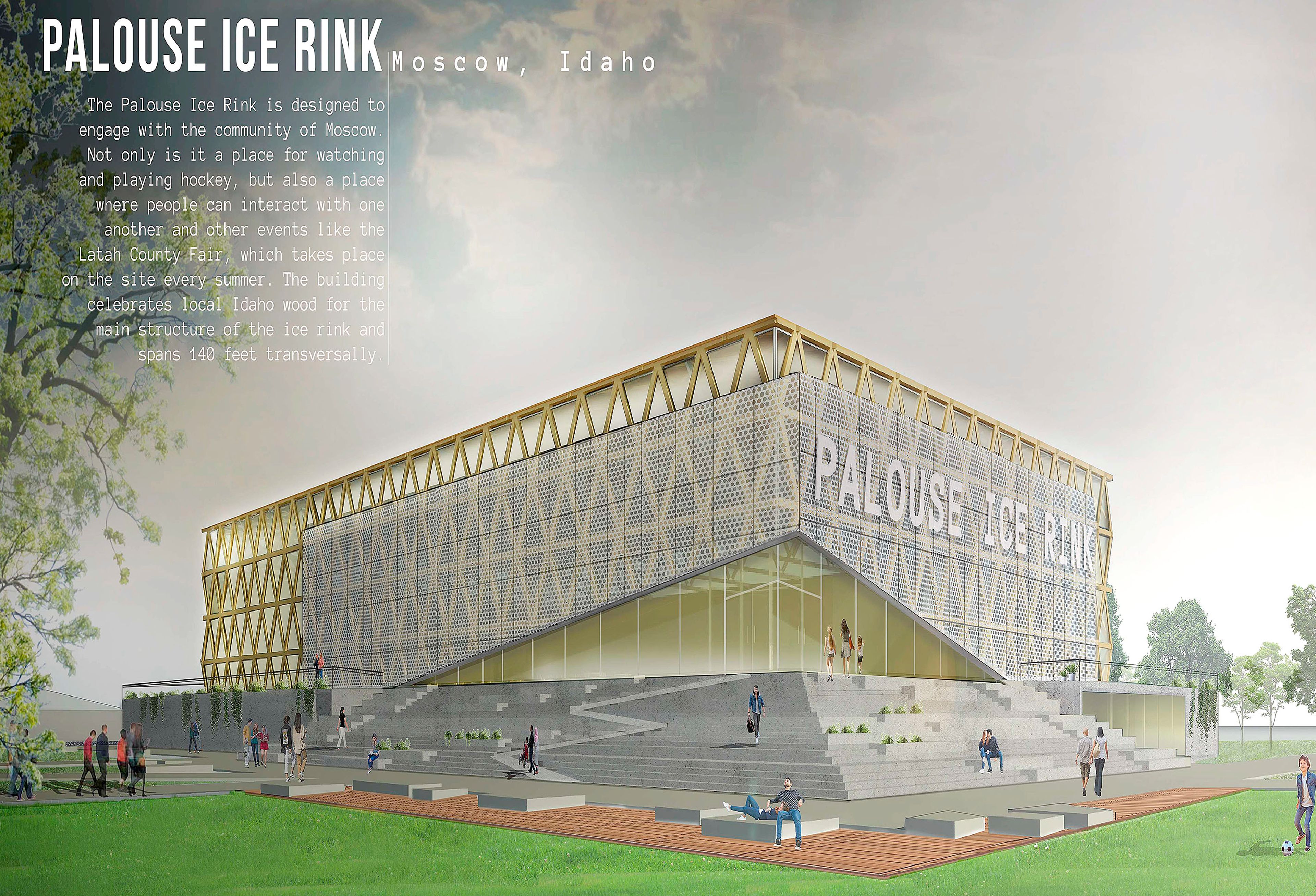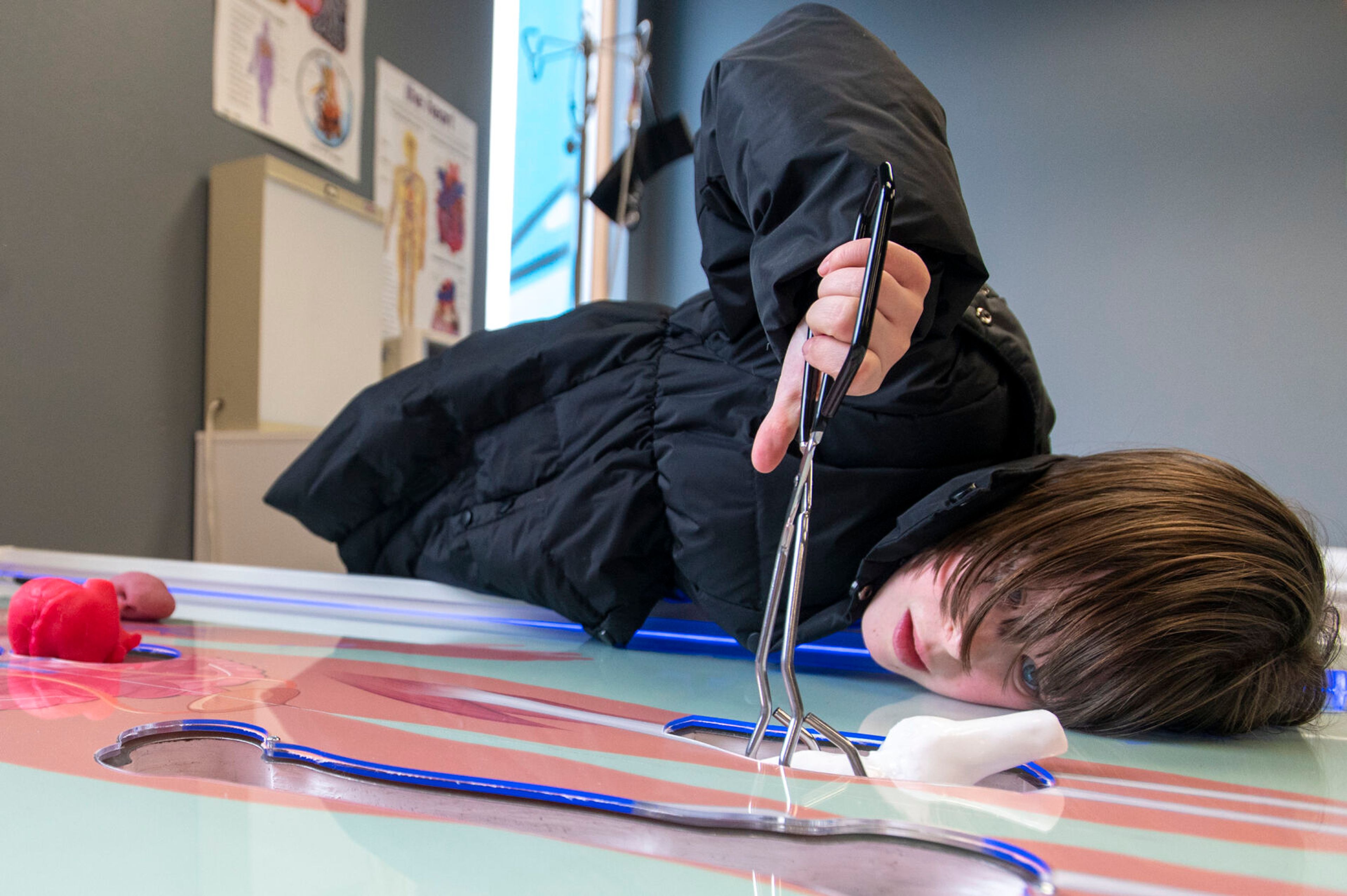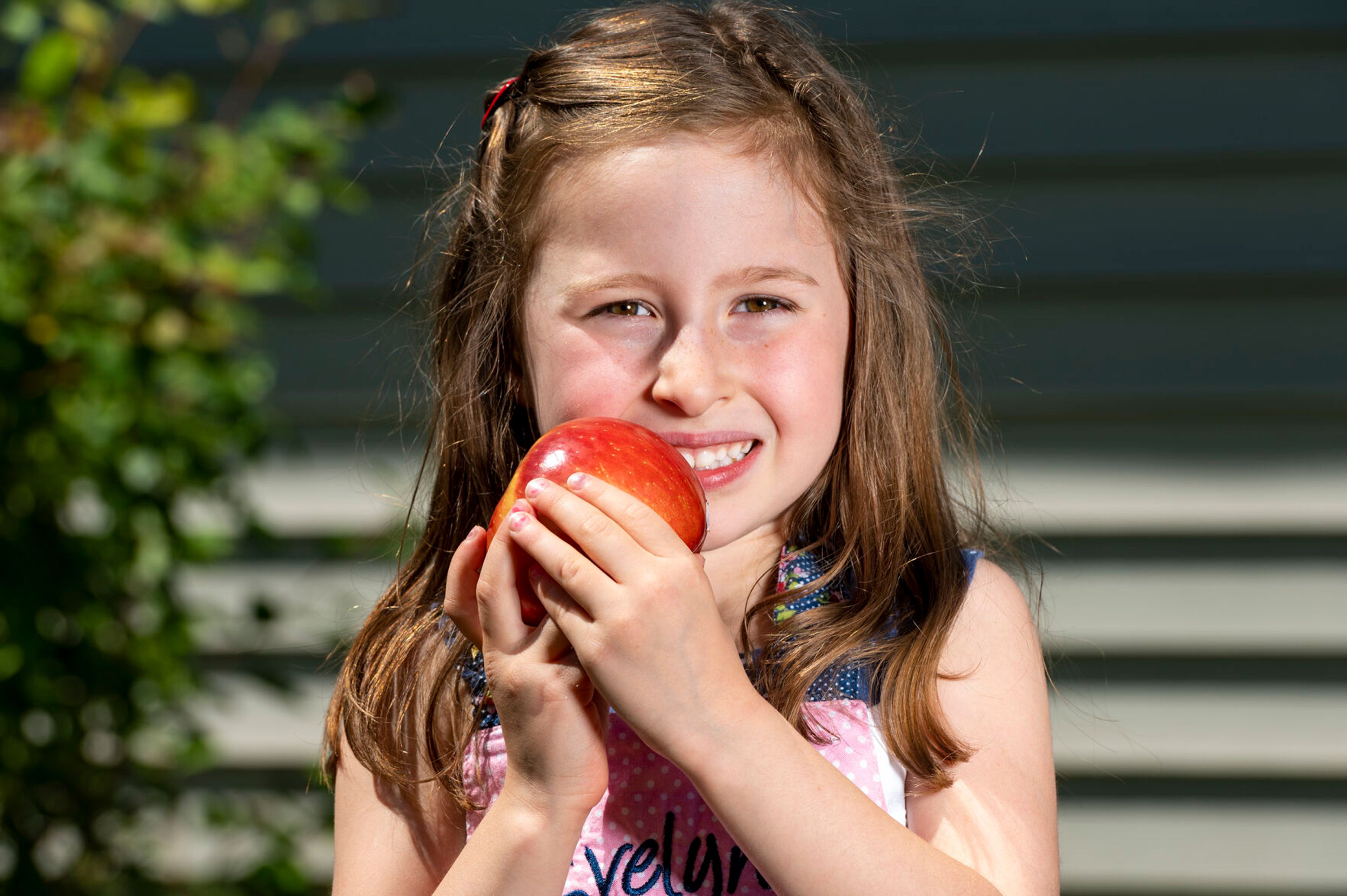Palouse Ice Rink reimagined in conceptual architecture competition
UI students produce modern, ambitious designs focused on utilizing wood products
The new and improved Palouse Ice Rink would feature soaring wood beams supporting vaulted ceilings and plenty of natural light — if a group of University of Idaho architecture students have their say.
As part of an annual competition focused on the creative and sustainable use of wood products in modern structure design, the UI architecture students were challenged with producing conceptual plans for a new Palouse Ice Rink.
While the plans produced in such competitions rarely come to fruition, Marketing and Communication Manager for the College of Art and Architecture Kate Keenan said the Idaho Forest Products Commission partners with the UI to host this event annually in an effort to give students an opportunity to hone their craft on real projects before graduation.
“That’s the goal of the competition,” Keenan said. “There’s no guarantee at all that their design concepts will actually be used by the architectural firm that won the contract for the expansion of ice rink. There is some possibility that their designs will inform or influence the final products, but this is this is purely conceptual.”
The winner of the competition, 23-year-old senior Samantha Jesser, produced designs of a tall, rectangular building supported by walls of wooden, x-shaped joists and framed by a wide, concrete pavilion, gradually descending into a nearby park.
“Wood is so cool because it can literally do anything,” Jesser said. “I wanted to showcase wood, but also — with the big steps and stuff — just to create places for concerts or hangouts for people that have kids to wait for their parents after school.”
While her designs were selected for their beauty, form and consideration of adjacent public spaces, Jesser said, they are likely a bit over budget. Fundraisers said they have raised about $2.6 million of their $5 million target for the new rink, and they are still actively seeking grant funds and partnerships to support the project.
IFPC Director Betty Munis said with improvements to wood products rendering building materials sturdier but less flammable, it’s becoming harder to ignore the benefits of incorporating more wood into building designs. Not only is timber affordable and available, it is “hands down” the most environmentally friendly option, Munis said.
“It’s renewable, it’s sustainable, it helps our economy and if we’re harvesting and planting, and harvesting and planting, we’ll have healthy forests,” Munis said. “We won’t have as many fires, we won’t have as many problems and it’s our backyard — it’s the resource that we have to use.”
Scott Jackson can be reached at (208) 883-4636, or by email to sjackson@dnews.com.









